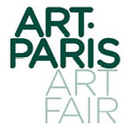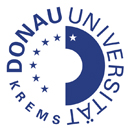When a Painting Moves... at Museo de Arte de Puerto Rico
|
Mariana Vassileva The Milkmaid. 2006, DVD, 3'00'' |
When a Painting Moves... Something Must Be Rotten! Moving painting or the dialectics of techno-referentiality
|
Info
From November 17, 2009
Bertita and Guillermo L. Martínez Gallery
Contact
yalvarez@mapr.org
787-977-6277 ext. 2215
787-977-4446
Address
http://www.mapr.org
299 Ave. De Diego
San Juan,
Puerto Rico 00910
When a Painting Moves…Something Must be Rotten!
Moving Painting or the Dialectics of Techno-Referentiality
From the 'anything goes as long as it isn't painting' attitude of the nineties, we have seen the tide shift to 'anything goes as long as it is painting.' But as we progress into the twenty-first century, we are going back ― as art critics David Lillington and Benjamin Buchloh have aptly noted ― to 'a new classicism,' as evidenced in the return of easel painting and traditional values and represented by the Leipzig and Dresden schools and artists such as Neo Rauch and Peter Doig. Maybe we should ask ourselves a basic question: If Velázquez lived today, what would he be doing?
However, more and more artists are using interdisciplinary approaches to their work, making it increasingly difficult to categorize their art as simply painting, photography or video, and so we have resorted to the term 'image.' It is precisely this polysemic and deconstructive value of the image that has enabled a reformulation of traditional pictorial techniques, materials, and genres, also serving to crystallize post-modern hybridization strategies.
Today, our ability to access visual information is enormous, as is our ability to present and disseminate it. If most information reaches us via television, the Internet, iPhones, video consoles, Facebook, and other mass media, the way we manipulate and redistribute images should also be radically new. Thus we have reached a place where the distinctions between painting, photography, performance, and digital processes have been blurred completely, generating a sort of 'diffused pictorialism.' This in turn dramatically affects the way we look at historical images.
TECHNO-REFERENTIALITY
To denote this new reality, I would dare suggest, in both a speculative and practical sense, the concept of 'techno-referentiality': a context in which painting measures itself against its own history and myths while at the same time deploying interdisciplinary and digital approaches, and in which the authenticity of an art work or the origins of the source material are irrelevant.
When does a painting cease to be a painting? How can we construct a painting informed by both the analog and digital realms? Is a moving painting a perversion of painting? These are some of the questions that the exhibit When a Painting Moves… Something Must Be Rotten! seeks to tackle. The artists in the exhibition play, whether from a literal, formal or conceptual perspective, with pictorial representation as 'moving images', reformulating such classical genres as still life, landscape, and portraiture.
ICONOGRAPHICAL REFORMULATIONS
Some of the artists included in the exhibition use iconic art-historical images to render a very contemporary re-reading of classical masters such as Vermeer, Pontormo, Chardin, Poussin, Whistler, and Malevich. They are: Sam Taylor-Wood, Mariana Vassileva, Raphael DiLuzio, Alexey Buldakov, and Ori Gersht.
These moving paintings are bringing back the old lost pleasure of contemplation that old master paintings provide, as the viewer is compelled to stay and watch the narrative unfold.
FORMAL EXPERIMENTS
In this section we find artists that use video and animation tools to 'create' paintings time and again before our eyes, making us feel as though we are witnessing the actual genesis of the painting. Sometimes the virtual brushstroke directly references the painted brushstroke, as is the case with Krisdy Shindler and Enrique Marty. In other works, the trace of the human hand disappears into the digital realm, where the pixel becomes a key player in the renewed debate of abstraction versus figuration. And so, while Fabián Marcaccio and Chus García-Fraile play back and forth with abstraction and figuration, Tim White-Sobieski creates softly moving geometrical shapes that in turn recall cityscapes. In these works, the high quality of the pixel is equated to painting's referentiality and the low quality to non-referentiality.
CONCEPTUAL TWISTS
We also find artists dealing with the issue of painting's performative aspect. Such is the case with José Maçãs de Carvalho, who alters various paintings in front of the camera, engaging in an ironic dialogue with famous works of art and questioning the idea of authenticity. Myritza Castillo also deconstructs a painting in her studio, and offers the viewer the visual evidence, while Raúl Cordero involves viewers in the creative process by sharing with them the amount of calories he burns up during a pictorial exercise.
THE VIRTUAL PICTORIAL SURFACE
It is in this promiscuous, slippery territory that the artists involved in this exhibition have made enriching journeys over recent years, back and forth between painting, photography, performance, digital technology, and images in motion. For them, the painting ― or rather the virtual pictorial surface ― has gradually become a realm for the 'displacement' of the image, both in the sense of its semantic ambiguity and its own materiality.
At first glance, the works on display may not correspond to what one might think of as painting, but we can say with certainty that they are actually reinventing and expanding the concept of pictorial representation in the light of new technologies, putting painting back at the forefront of contemporary artistic discourse.
So, what about Velázquez? I'm guessing he'd be playing with the computer, taking photos with his digital camera, and making visual paintings projected on giant screens at the latest underground club into the wee hours.
Paco Barragán
Guest Curator
When a Painting Moves…Something Must be Rotten!
Moving Painting or the Dialectics of Techno-Referentiality
Museo de Arte de Puerto Rico (MAPR)
November 17, 2009 - February 15, 2010











